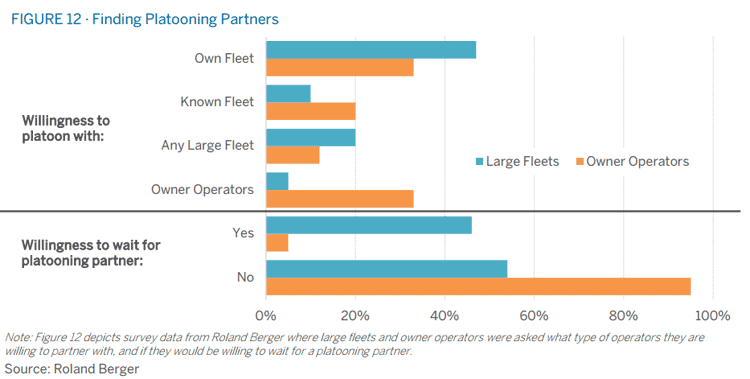So-called truck platooning - in which a group of typically three trucks travel together, with drivers but the trailing two trucks automatically moving in tandem with the truck in front of them by using sophisticated systems than include sensors, high speed data communications and smart computer programs - is seemingly gaining steam.
The approach allows those trailing trucks to travel at much closer distances to the trailer ahead, improving mileage through reduced wind resistance. It can also have the same same congestipn benefits as reducing trucks on the highways.
There have been several successful demonstrations of platooning technology both in the US and Europe (see Is Truck Platooning Almost Right Around the Corner?).
However, surprisingly enough, most of the discussion has focused on the technology and potential benefits of platooning - and little on the logistics of how this would really work, specifically around how platoon trains are formed. Questions would include:
• What is the process for assembling a platoon?
• Do the trucks need to be all from one tcarrier?
• Do trains in a platoon have to use the same platooning technology? Will those systems be backward and forward compatible with other versions from the same system provider?
• How will cost allocation work?
• How will the truck sequence be determined?
Not a small list of issues.
Just this week, we saw the chart below in a new report from industry group Securing America's Future Energy , which cited research from Roland Berger on how drivers would view partnering to form platoons:

As can be seen, there are indeed a lot of questions, especially with regard to owner-operators willingness to parter with large carriers to form platoons.
"Determining who should act as the lead truck in the platoon - especially across fleets - is an
important logistical question, as positioning determines the degree to which each party benefits from
fuel savings," the report notes. "Some have suggested a new model where an entity - perhaps a third-party logistics
provider (3PL) - organizes across fleets to determine an equitable way to share and distribute
savings attained from platooning miles driven."
Any Feedback on our Supply Chain Graphic of the Week? Let us know your thoughts at the Feedback section below.
Your Comments/Feedback
|